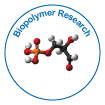Unveiling Molecular Mysteries: A Comprehensive Guide to NMR Spectroscopy
Received: 01-Dec-2023 / Manuscript No. bsh-23-121500 / Editor assigned: 04-Dec-2023 / PreQC No. bsh-23-121500 (PQ) / Reviewed: 18-Jan-2024 / QC No. bsh-23-121500 / Revised: 20-Dec-2023 / Manuscript No. bsh-23-121500 (R) / Published Date: 27-Dec-2023
Abstract
Nuclear Magnetic Resonance (NMR) spectroscopy is a powerful analytical technique that plays a pivotal role in unraveling the secrets of molecular structures and dynamics. Widely employed in fields such as chemistry, biochemistry, and medicinal sciences, NMR spectroscopy provides detailed information about the nuclei within a sample, offering insights into molecular composition, conformation, and interactions. This article delves into the principles, techniques, and applications of NMR spectroscopy, showcasing its significance in modern scientific research.
Keywords
NMR; Molecule; MRI
Introduction
At its core, NMR spectroscopy relies on the interaction between the nuclei of certain atoms and an external magnetic field. Most commonly, hydrogen nuclei (protons) are studied due to their abundance in organic compounds. When placed in a magnetic field, these nuclei align either parallel or anti-parallel to the field. By applying radiofrequency (RF) pulses, the nuclei are momentarily tipped away from this alignment. Upon relaxation, the nuclei emit radiofrequency signals that can be detected and translated into a spectrum, providing valuable information about the sample’s molecular environment [1-3].
Methodology
NMR instruments and techniques
NMR instruments consist of a strong magnet, radiofrequency transmitter and receiver coils, and a computer for data analysis. The strength of the magnetic field, measured in Tesla, influences the resolution and sensitivity of the NMR spectrum. High-field instruments, such as those operating at 400 MHz or higher, are common in research settings [4].
One-dimensional (1D) and two-dimensional (2D) NMR spectroscopy are the two primary techniques employed. 1D NMR provides information about chemical shifts, coupling constants, and peak integrals, aiding in the identification of molecular structures. In contrast, 2D NMR techniques, such as COSY (correlation spectroscopy) and HSQC (heteronuclear single quantum coherence), offer insights into molecular connectivity and interactions [5].
Applications of NMR spectroscopy
NMR spectroscopy finds applications across various scientific disciplines-
Chemistry: In organic and inorganic chemistry, NMR spectroscopy is indispensable for elucidating the structure of compounds, analyzing reaction kinetics, and monitoring chemical equilibria.
Biochemistry: In the study of biomolecules, such as proteins and nucleic acids, NMR spectroscopy provides critical information about their three-dimensional structures, dynamics, and interactions.
Medicine: NMR spectroscopy is employed in medical imaging techniques like magnetic resonance imaging (MRI), offering noninvasive visualization of soft tissues in the human body.
Pharmaceuticals: NMR is crucial in pharmaceutical research for drug development, helping to analyze the structure of potential drug candidates and understand their interactions with biological targets.
Environmental science: NMR spectroscopy can be used to analyze environmental samples, providing insights into soil composition, water quality, and pollutant detection [6-8].
Challenges and future perspectives
While NMR spectroscopy is a powerful tool, it does have limitations. High costs, the need for specialized expertise, and challenges in analyzing large and complex molecules are notable drawbacks. Nevertheless, ongoing advancements, such as the development of novel NMR techniques and instrumentation, continue to address these challenges [9,10].
Conclusion
In conclusion, NMR spectroscopy stands as a cornerstone in modern scientific research, offering a window into the world of molecules. Its applications are diverse, ranging from fundamental chemical studies to cutting-edge medical imaging. As technology advances, NMR spectroscopy is poised to unlock even more secrets, pushing the boundaries of our understanding of the molecular world.
References
- Derraik JGB (2002) the pollution of the marine environment by plastic debris: a review. Mar Poll Bull 44: 842-852.
- Barnes DKA, Galgani F, Thompson RC, Barlaz M (2009) Accumulation and fragmentation of plastic debris in global environments. Phil Trans R Soc B 364: 1985-1998.
- Thompson RC, Swan SH, Moore CJ, vom Saal FS (2009) our plastic age. Phil Trans R Soc B 364: 1973-1976.
- Avio CG, Gorbi S, Regoli F (2017) Plastics and microplastics in the oceans: from emerging pollutants to emerged threat. Mar Environ Res 128: 2-11.
- Jambeck JR, Geyer R, Wilcox C, Siegler TR, Perryman M, et al. (2015) Plastic waste inputs from land into the ocean. Science 347: 768-771.
- Law KL (2017) Plastics in the marine environment. Annu Rev MarSci 9: 205-229.
- Andrady AL (2011) Microplastics in the marine environment. Mar Poll Bull 62: 1596-1605.
- Cole M, Lindeque P, Halsband C, Galloway TS (2011) Microplastics as contaminants in the marine environment: a review. Mar Poll Bull 62:2588-2597.
- Van Cauwenberghe L, Vanreusel A, Mees J, Janssen CR (2013) Microplastic pollution in deep-sea sediments. Environ Poll 182: 495-499.
- Obbard RW, Sadri S, Wong YQ, Khitun AA, Baker I (2014) Global warming releases microplastic legacy frozen in Arctic Sea ice. Earth's Future 2:315-320.
Citation: James S (2023) Unveiling Molecular Mysteries: A Comprehensive Guideto NMR Spectroscopy. Biopolymers Res 7: 186.
Copyright: © 2023 James S. This is an open-access article distributed under theterms of the Creative Commons Attribution License, which permits unrestricteduse, distribution, and reproduction in any medium, provided the original author andsource are credited.
Share This Article
Recommended Journals
Open Access Journals
Article Usage
- Total views: 502
- [From(publication date): 0-2024 - Apr 05, 2025]
- Breakdown by view type
- HTML page views: 312
- PDF downloads: 190
